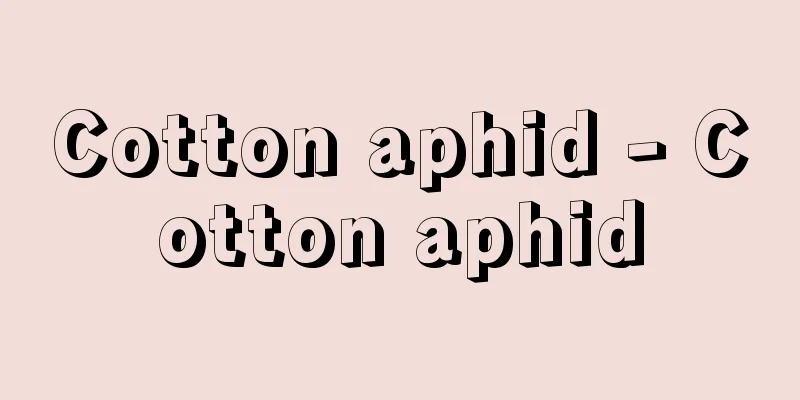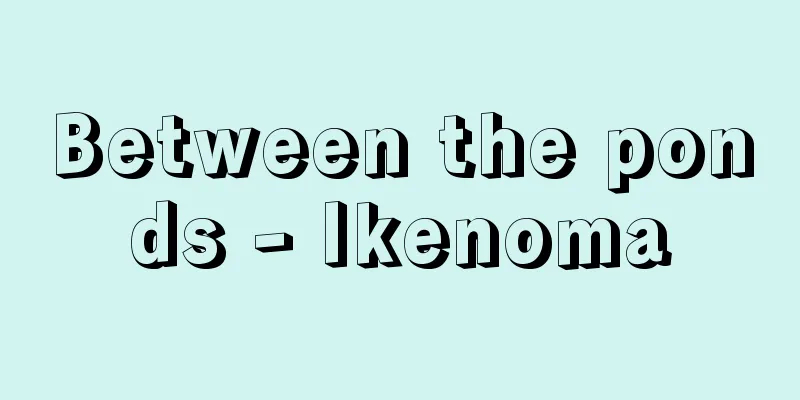Menu - Menu

|
The type and order of food to be served at the table. It also refers to the menu (menu book, menu table) that lists them. The word menu has been used since the Muromachi period, and it was around this time that samurai families began combining various dishes at drinking banquets. "Ken" means to offer sake and snacks to guests, and the custom of offering three cups of sake for each snack and then clearing the tray (called ikkon) was already in place at that time. Therefore, originally, a menu did not refer to the contents of the main meal (honzen), but rather to the contents of the snacks (ikkon and nikon) served at a drinking banquet. Three or five snacks were common, but at more formal banquets, more than that, up to around 19 snacks, could be served. For example, in March 1561 (Eiroku 4), when Shogun Ashikaga Yoshiteru visited the residence of Miyoshi Yoshinaga, the banquet featured nearly 100 ingredients in the menu, with seven bowls of rice porridge and other dishes eaten in between, amounting to 17 servings. Later, the term "menu" came to refer to any combination of food items, not just snacks and sake. The basic Japanese menu consists of rice, soup, and side dishes, and often indicates the number of dishes other than rice, such as "ichijuu sansai" (one soup and three side dishes). Full-scale menus can be broadly divided into three types: honzen ryori (main course), kaiseki (traditional Japanese course), and kaiseki (traditional Japanese course). Honzen ryori (main course) is a style of meal arrangement inherited from fukusa ryori (traditional Japanese course) that was popular among common people during the Edo period, with the main course at the front and two to five other dishes. It can also be omitted, such as the main course alone, or the main course through the third course. Starting with one soup and three side dishes, there is one soup and five side dishes, two soups and seven side dishes, and three soups and seven side dishes. Kaiseki is a meal that accompanies the tea ceremony, and the rule is one soup and three side dishes. Kaiseki ryori is a meal arrangement suitable for drinking parties that was held in teahouses during the Edo period, and the order of the menu is mainly alcohol, followed by side dishes, with soup and rice coming last. Other types of menus include food for events, school meals, meals for sick people, and everyday home cooking. Standardized dishes have almost disappeared, and there are now many combinations of dishes of unknown nationality. In Western cuisine, the equivalent of a menu in Japan is called a menu, but the word menu also includes a la carte dishes (a la carte), so the meaning is somewhat different. In Western cuisine, the formal dinner consists of hors d'oeuvres, soup, fish dish, meat dish, ice cream, steamed dish, salad, entremets (sweet dish), cheese, fruit, and drink, arranged in that order. Sometimes some dishes are omitted to simplify the dinner. There are also buffet-style, cocktail parties, and outdoor cooking, each of which has its own customary arrangement of dishes. There are also special menus for special occasions. In Chinese cuisine, a menu is called a zaitan. There is no set, strict menu, but the menu generally consists of three types of dishes: appetizers (chien zai), main dishes (ta zai), and dim sum (tenshin). [Tomomi Kono] [Reference] | | | | |Source: Shogakukan Encyclopedia Nipponica About Encyclopedia Nipponica Information | Legend |
|
食卓に出すべき料理の種類や順序。またそれを記した品書(しながき)(献立書(こんだてがき)、献立表)をいう。献立の語は室町時代から用いられ、供応の酒宴に各種の料理を組み合わせることもこのころ武家によって始められた。「献」は酒肴(しゅこう)を客に勧める意で、一肴につき酒3杯を飲ませて膳(ぜん)を下げる(これを一献という)作法も当時すでに行われていた。したがって、本来、献立とは本膳(ほんぜん)の内容ではなく、酒宴の一献、二献という肴(さかな)の内容を書き立てたものであった。三献ないし五献を普通とするが、丁重な宴ではそれ以上、十九献ぐらいまで出すこともあった。たとえば、1561年(永禄4)3月、将軍足利義輝(あしかがよしてる)が三好義長(みよしよしなが)邸に御成(おな)りのときの饗宴(きょうえん)では、100近い材料を献立に用い、湯漬けなど七膳を間に食しながら、酒宴十七献に及んだ例がある。のち、酒肴に限らず料理の品目取合せ一般を献立と称するようになった。 日本の献立の基本形は、飯、汁、菜から成り立ち、一汁三菜というように飯以外の数を表すことが多い。また本格的な献立では、本膳料理、懐石(かいせき)、会席(かいせき)料理の三つに大別される。本膳料理は、江戸時代に庶民の間に普及していた袱紗(ふくさ)料理の膳組みが受け継がれたもので、本膳が正面に、それに二~五の膳がつく。本膳のみ、あるいは本膳から三の膳までといったように省略することもある。一汁三菜から始まり、一汁五菜、二汁七菜、三汁七菜などがある。懐石は茶の湯に伴う食事で、一汁三菜が原則である。会席料理は、江戸時代に料理茶屋で行われた酒宴席向きの料理組みで、献立順位は酒を主にし、菜から進み、汁と飯は最後になる。このほか献立の種類には、行事食、集団給食、病人食などや、日常的な家庭料理の献立がある。ほとんど定型はなくなり、国籍不明的な料理の組合せが多くなってきている。 西洋料理では、日本の献立にあたるものをメニューmenuというが、メニューの場合は一品料理(アラカルト)も含まれ、いくぶん意味が異なる。西洋料理では、オードブル、スープ、魚料理、肉料理、氷菓子、蒸し焼き料理、サラダ、アントルメ(甘味料理)、チーズ、果物、飲み物が正餐(せいさん)の料理で、この順に組み立てられている。一部を抜いて簡略にすることもある。このほか、ビュッフェ・スタイル、カクテルパーティー、野外料理などがあり、それぞれに料理の組立てが習慣的にできあがっている。行事食など、特別の献立もある。中国料理では献立を菜単(ツァイタン)という。定型できっちりしたものはないが、だいたい前菜(チエンツァイ)、大菜(ターツァイ)、点心(てんしん)の3種から献立が成り立っている。 [河野友美] [参照項目] | | | | |出典 小学館 日本大百科全書(ニッポニカ)日本大百科全書(ニッポニカ)について 情報 | 凡例 |
>>: Turbidity current - kondakuryu (English spelling)
Recommend
Reversible cell
A battery in which both the positive and negative ...
Anti-Japanese War
The Chinese name for the Second Sino-Japanese War ...
Mukteśvara (English spelling)
...The Paraśurāmeśvara Temple and Vaitāl Deul Tem...
Jar - jar
It is also written as "bin". It is a ce...
Hot Discographie
...Although a simple record list may be called th...
constructive mathematics
...Furthermore, with the development of recursion...
Abelia tetrasepala (English spelling) Abelia tetrasepala
…[Makoto Fukuoka] [Makoto Wakisaka]. … *Some of t...
Remington, E. (English spelling) Remington E
…American entrepreneur. Born in New York State, h...
Rochefort, Victor-Henri, Marquis de Rochefort-Luçay
Born: January 3, 1831, Paris [Died] June 30, 1913....
Metalloprotease
…Enzymes are classified into four types based on ...
"Chinese Lion Screen"
...This folding screen was presented to Uesugi Ke...
Minnesang (English spelling)
The name of love songs that developed in Germany i...
David (English spelling) Dawid (Hebrew)
The second king of the Kingdom of Israel (reigned...
Piperidine
Hexahydropyridine. C 5 H 11 N (85.15). Also calle...
Petrescu, Cezar
… [20th century] In the early 20th century, the p...









